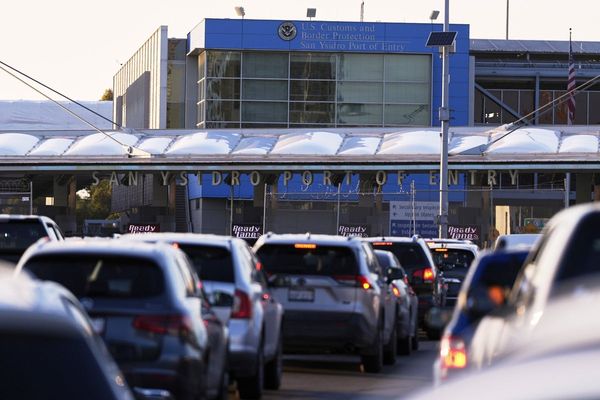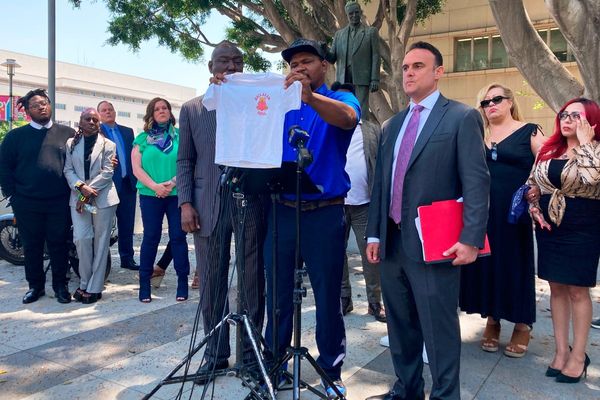The 10-year Treasury yield hit another 16-year high on Tuesday, knocking the S&P 500 to a four-month low. An unexpected rise in job openings provided more fuel for Treasury yields to keep climbing on Tuesday. That followed stronger-than-expected manufacturing and construction data on Monday as well as the weekend deal to avoid a government shutdown.
The 10-year Treasury yield has rocketed out of its trading range dating back to the 2007 financial crisis on the run of positive economic news, which also has raised odds of another Federal Reserve rate hike. Yet the economic outlook is far from clear. The uncertainty was highlighted by a new IBD/TIPP Poll released on Tuesday showing the Economic Optimism Index crashing to the lowest level since 2011. The upshot: The Fed is at risk of overtightening and precipitating a swift economic pullback.
10-Year Treasury Yield Rises As Inflation Falls
The continued move higher for the 10-year Treasury yield comes despite Friday's largely benign inflation report, which continued the recent disinflationary trend. The Fed's key measure of core inflation rose just 0.1% in August, the smallest monthly gain since late 2020.
The 10-year Treasury yield surged to 4.81% on Tuesday. On Friday, the 10-year yield had fallen as low 4.5% on tame inflation data, before bouncing to 4.57% to end the week.
While Fed Chair Jerome Powell has said the central bank will need to see six months of tame data to gain confidence in the current trend, we're getting pretty close. The six-month annualized core PCE inflation rate eased to 2.9% in August from 3.4% in July.
Real Interest Rates Rise
So if inflation is falling, why are the 10-year Treasury yield and other government bond yields moving higher? The reason is that real interest rates, which subtract inflation, are rising. That's in part because the Fed thinks it will take higher real interest rates, at least temporarily, to wrestle inflation back to 2%.
New projections released last month showed the Fed key policy rate ending 2024 at 5.125%, even as core inflation recedes to 2.6%. That implies a 2.5% real interest rate. Over the past decade, by comparison, the Fed has assumed the neutral real interest rate, at which monetary policy is neither accelerating or diminishing growth, was just 0.5%.
Why might the neutral rate now be significantly higher? Onshoring of manufacturing and deglobalization, the cost of the transition to renewable energy, and aging demographics that contribute to a tighter labor force are some of the reasons.
Still, the Fed could be wrong. Consumers and small businesses might succumb to high interest rates before the Fed expects. High interest rates, high gas prices and renewed student loan payments are all hitting consumers at the same time. The Fed's projections are based on what was happening in the economy in June and July, before those recent stresses escalated.
JOLTS Report
The Job Openings and Labor Turnover Survey showed that openings unexpectedly rose to 9.6 million in August, up nearly 800,000 from the level initially reported for July. The Fed is trying to balance labor demand and supply, limiting upward pressure on wages, so an increase in job openings is the opposite of what policymakers want. As of August, there were 1.5 job openings for every unemployed person.
Still, the data wasn't all bad, and there are reasons to take the rise in job openings "with a grain of salt," according to Glassdoor economist Daniel Zhao. Rather than a broad-based increase, the gain from July to August was skewed heavily toward professional and business services, which added 509,000 openings, Zhao noted.
Further, economists see reason to be skeptical of the JOLTS data more generally. That's because the sample size is pretty small — 16,000 establishments vs. 651,000 for the monthly employment report — and only about 1 in 3 businesses bother responding.
The good news within the report is that the quits rate for private sector employers held at 2.6%, having fallen from 3.1% a year ago. Quits are now in line with their pre-pandemic level. Fewer quits means less pressure to raise wages to keep employees from bolting for a bigger payday.
The surge in the 10-year Treasury yield following the JOLTS report appears symptomatic of a market that is on edge ahead of Friday's jobs report. A strong employment report could deliver a gut-punch.
ISM, Construction Spending
Until incoming data shows consumption flagging and the job market rolling over, there may not be much relief from high Treasury yields. We certainly didn't get that kind of data on Monday.
The Institute for Supply Management's manufacturing index exceeded expectations, rising 1.4 points to 49. Production rose 2.5 points to 52.5, signaling a return to growth after a neutral 50 reading in August. The new order index rose to 49.2 from 46.8. The indicates orders, though still declining, have largely stabilized.
The ISM employment index rose to 51.2 from 48.5, indicating net hiring last month. That's consistent with expectations for a solid jobs report on Friday.
Construction spending in August rose to a $1.983 trillion annual rate, up 0.5% from July, as expected. However, spending rose a stronger-than-expected 7.4% from a year ago because July's monthly gain was revised up to 1.2% from the initially reported 0.7%.
The manufacturing construction boom continued, as spending on this category rose to $198.4 billion, up 1.2% on the month and 65.5% from a year ago.
Dow Dives As Yields Soar; These Stocks Skid From Key Level
Treasury Supply
Another factor keeping upward pressure on Treasury yields has been a surge in supply. The Treasury's needs have been rising partly because of growing deficits and partly because the Treasury had depleted its cash reserves held at the Fed before the debt limit was lifted by Congress in early June.
On July 31, the Treasury raised its Q3 borrowing plan to $1.01 trillion, up $274 million from the preliminary number announced in May. At the same time, the Treasury said it expected to borrow $852 billion in Q4. Even at the Q4 pace, that's a $3.4 trillion annual rate, which is way above the expected $2 trillion deficit.
One more factor contributing to excess supply is the Fed's quantitative tightening program, which is unloading up to $95 billion per month in Treasuries and government-backed mortgage securities.
Fed Rate-Hike Odds
Odds of a quarter-point rate hike on Nov. 1, when the Fed's next policy update is due, jumped to 31% on Tuesday from 18% on Friday, according to CME Group. Odds of a hike by the Dec. 13 update have climbed to 45% from 35%.
Stronger economic data and the federal government averting a government shutdown are reasons for the higher Fed rate-hike odds.
S&P 500
The S&P 500 slid 1.4% in Tuesday stock market action, falling to the lowest level since June 1.
The S&P 500 has now fallen close to 8% from its closing high on July 31, which was the peak of a massive 28% rally from the Oct. 12 bear market low.
After the benign inflation data on Friday, it looked like the S&P 500 might string together a third straight gain. But stocks reversed lower and finished just below the flat line. The market likely needs to see clear evidence the economy is softening before it can mount a significant rally.
Be sure to read IBD's The Big Picture column after each trading day to get the latest on the prevailing stock market trend and what it means for your trading decisions.







